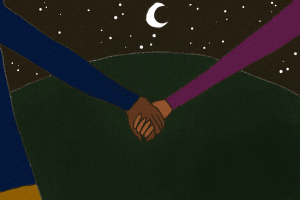“Ballad of Buster Scruggs” displays creativity over cohesion
February 1, 2019
In the opening scene of the Coen brothers’ newest film, a ragged and worn book titled “The Ballad of Buster Scruggs” lies centered on a nondescript wooden floor as Western guitars and horns play in the background.
A wrinkled hand opens the cover as the names of some of Hollywood’s biggest hitters roll across the screen: Liam Neeson and James Franco both star in the Netflix Western-style film released in November 2018.
Darkly lit and decorated with a dead tree and skull, the cover foreshadows the film’s darkness to come. In six short stories, the Coen brothers create a hauntingly beautiful portrait of life. The films detailed costumes, disjointed dialogue, and dreary color scheme come together to shock the viewer into an emotionally distanced analysis.
In “Ballad,” the Coen brothers create a film that is sometimes more style over substance with its infrequently engaging plot points and slow storylines, although their characters are thoughtful and their cinematic creativity is stunning.
Nominated for Best Adapted Screenplay, Best Original Song, and Best Costume Design at the 91st Academy Awards, “The Ballad of Buster Scruggs” is based on stories by Jack London and Stewart Edward White.
While each short is individually engaging, it is sometimes hard to remember that they are part of one meaningful whole. Creative scenes often overpower any sense of plot or coherence throughout the film.
The Coen brothers expertly develop characters that the viewer can’t help but become attached to in twenty minutes or less. Our affection is at its highest just before these people are stripped away from us, offering a grim view on humanity, attachment and fate.
Gun fights, bank robberies and other familiar Western motifs fill “Ballad,” and grotesque violence is often juxtaposed against slow shots panning across the stunning scenery of the American West and cheerful melodies.
A dimmed palette haunts the screen, turning vibrant scenery into dreary, foreboding landscapes.
Each shot is carefully crafted, and it is tempting to ignore the storyline and stare in awe at the delicate, sweeping coats and the unique camera angles offered through the inside of a guitar.
“Ballad” is a stunningly beautiful film that offers brief, frightening glimpses into the human psyche. However, these insights, and therefore any attempt at tying the film together thematically, can be easily overlooked in exchange for the movie’s engaging aesthetics.






